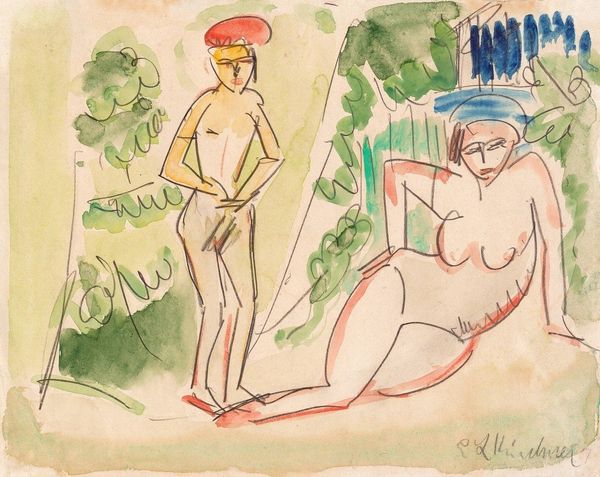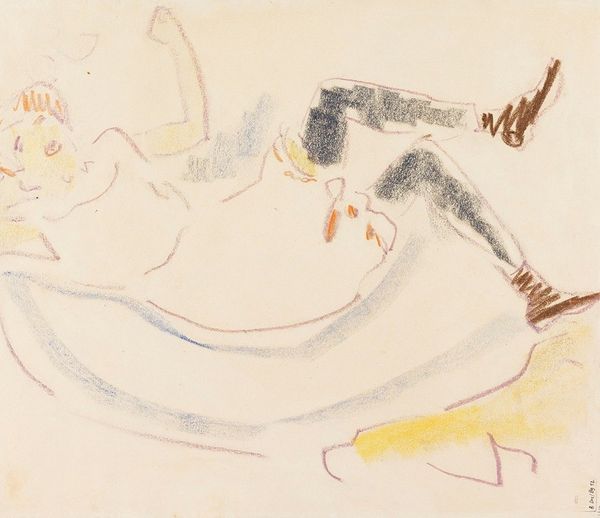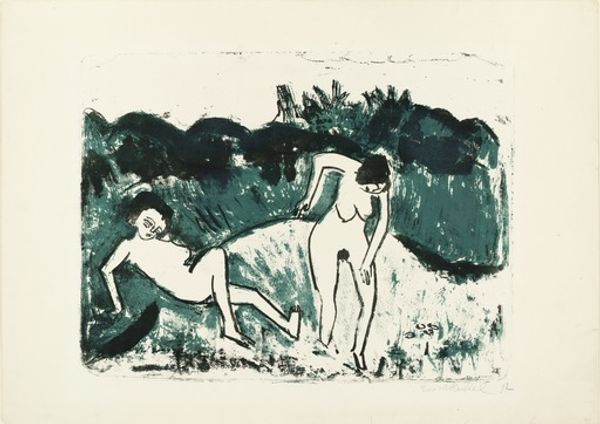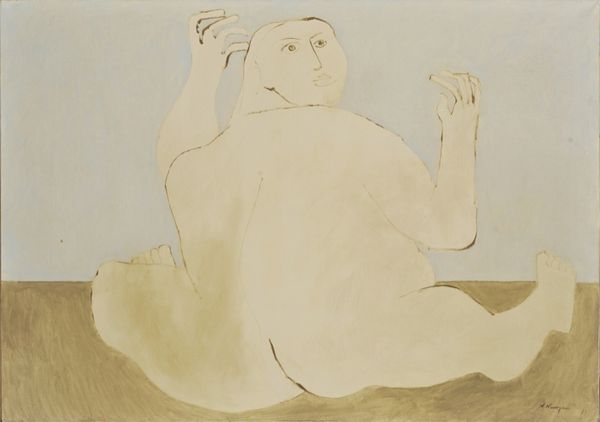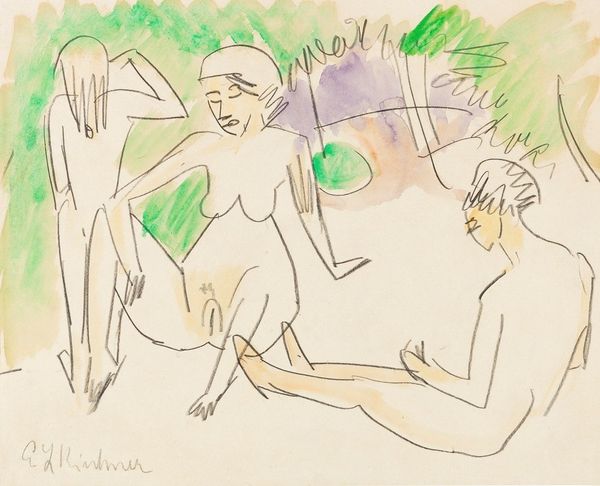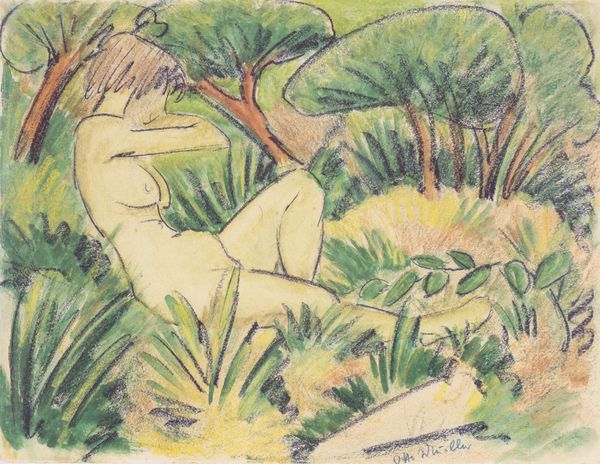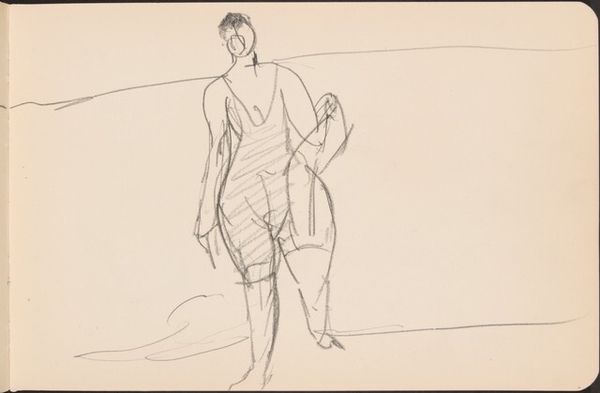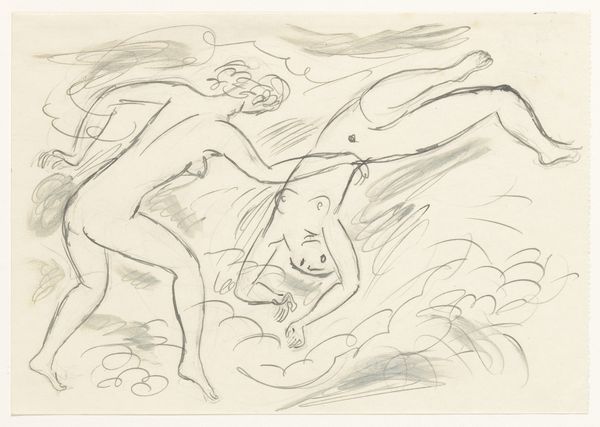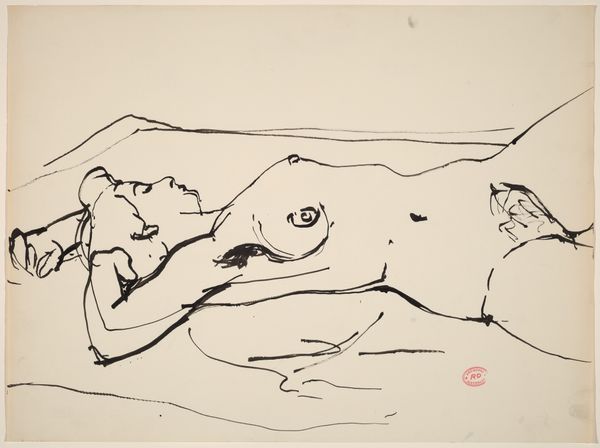
drawing, plein-air, paper, watercolor
#
drawing
#
plein-air
#
landscape
#
figuration
#
paper
#
watercolor
#
expressionism
#
nude
Copyright: Public Domain: Artvee
Editor: Ernst Ludwig Kirchner's "Bathers on the Shore," made in 1911, is a watercolor and pencil work that strikes me as both intimate and a bit unsettling, the nude bather distorted in an expressionistic style. What do you see in this piece, considering its time? Curator: This piece pulsates with the anxieties and liberation movements brewing in pre-World War I Germany. The stark lines and almost primitive depiction of the body reject classical ideals, right? It echoes a cultural fascination with the 'natural' and a rejection of bourgeois values. Editor: Yes, the rejection is clear. I'm trying to understand how this all connects back to imagery and its weight over time? Curator: Kirchner and his Die Brücke contemporaries sought to strip away artifice. Nudity here is not about idealized beauty; instead, it is raw and exposed. The beach becomes a space of freedom but also vulnerability. Does it suggest anything of the changing societal mores of the time, particularly surrounding ideas of gender and identity? Editor: It does feel raw, yes. Perhaps Kirchner is revealing not just the physical body but the psychological exposure of modern life, a feeling heightened by the awkward posture and simplified rendering of the landscape? Curator: Precisely! And look at how he captures figures. Those deliberately unrefined shapes mirror societal disruptions and individual alienation – an emotional tension he masterfully conveys. Water, being cleansing and formless, contrasts yet coexists with sharp angles and rigid bodies. Does any visual element hint towards future unease that World War I would soon cause? Editor: That's a lot to absorb – this initial quick sketch manages to encapsulate many tensions! I definitely see it in a different, more informed way now. Curator: Indeed. The deceptively simple strokes carry a weighty cultural memory, revealing layers of meaning. Hopefully it gives you better appreciation as we continue to engage in art history.
Comments
No comments
Be the first to comment and join the conversation on the ultimate creative platform.


